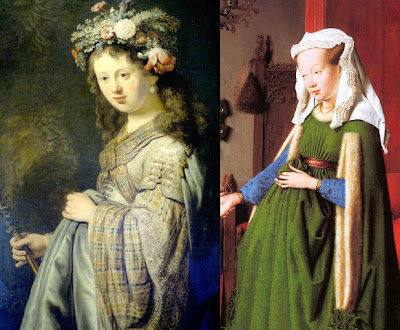The image of Turner's painting used here is a hand-colored reproduction by engraver John Cousen (b. 1804), identical to the original in terms of basic composition. I found this reproduction of Turner's painting makes for more clearly discernible comparisons, and so have elected to use it over the original. It is compared with the much earlier work by Titian which it resembles merely in the posing of its figures. As such, Turner's version of the episode of Bacchus and Ariadne on the island of Naxos has no amount of the "sacred conversation" so abundant in Renaissance painting. The figures appear artificially posed and totally bereft of any awareness of one another's presence, whereas the whole of Titan's work is comprehensively unified.
J. M. W. Turner – "Bacchus and Ariadne" (1840)
Seen here...
Titian – "Bacchus and Ariadne" (1523)
A Comparison of Details
A faun and his dog. Note his arched stance and brown cloth over left shoulder.
Compare the falling sweep of Ariadne's dress, posed right foot, and position of hands.
Noting similarities in the Bacchi, see Turner's use of the cymbal-player's pose.
★
[Art Edition] This blog is intended as a space within which I will share my findings related to classical music appropriation. Many composers in the past have quoted, borrowed, and recycled the themes and melodies of others. Having already noted many such instances, I hope to include the more interesting, and convincing, examples herein.










